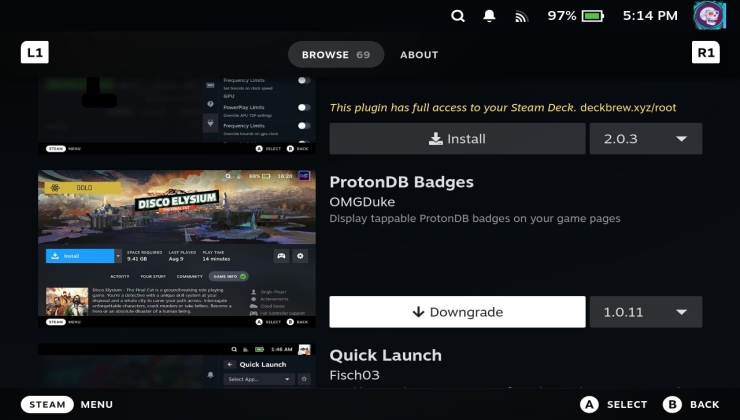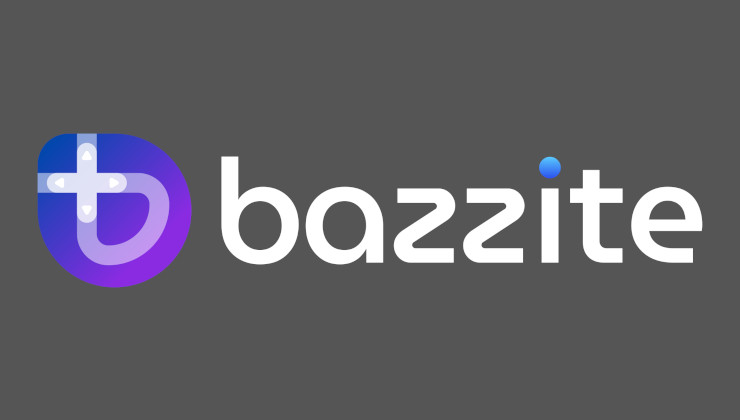You might have heard of Microsoft's latest plans (source) to keep people on their own store, with a locked down Windows 10 S mode to be available on all versions of Windows. This is easily a first step towards Windows 10 S being the first version of Windows that users see.
Windows 10 S is essentially a version of Windows 10 that's locked into the Windows Store with Universal Windows Platform (UWP) apps, so you can't really run traditional applications like Steam and so on.
This goes directly back to how Gabe Newell of Valve and plenty of other developers felt about Windows 8. With Newell saying "I think Windows 8 is a catastrophe for everyone in the PC space.". There's also Croteam CTO Alen Ladavac who wasn't too pleased with it either, he's now tweeted about this latest issue from Microsoft to say " 'I told you so' doesn't quite cut it. :P". Ladavac also said in a reply "Think about it - if apps need to be adapted for UWP, it might be wiser to just adapt them for OSX/Linux instead.".
It makes sense too, if Microsoft is determined to make Windows more locked-down over time, that's not really good for anyone. Actually investing into Linux gaming, where you have far more control opens you up to many more opportunities.
Apparently, Windows 10 S can be upgraded to a "normal" version of Windows 10 Home for free, but the problem is that Microsoft has said around 60% don't even bother to do the upgrade keeping them locked into the Windows Store.
I hope Valve is keeping an eye on this, and it should certainly make Linux and SteamOS quite attractive again for them. There's good reasons why Valve has kept SteamOS around and plans like this from Microsoft (even if they fall through) will happen again and again. If Microsoft fail, they will wait a while and try it another way.
How long will it be until you have to pay to upgrade to Windows 10 Home, how long before the Home edition doesn't exist? Many questions—questions which should probably alarm people.
Thanks for the tip kellerkindt. Note: Article intro updated after publishing to better reflect my own point.
Valve GOG etc will just haft to pay Microsoft to get access to their user-base in the future. IT WILL HAPPEN, just a matter of when. Not like they can do anything about it, sure they could argue anti competitive behaviour but I don't think that would truly fly in court these days given what we have seen happen in other industries. Basically they can push their own platform however they like, just like how MacOS does, and Netflix etc etc......
Alternatives exist like SteamOS and Linux, unfortunately its hard to move people off Windows. For example I'm using it atm because I have Fallout 4 / SkyrimSE / Witcher 3 on windows, can't run them on Linux (wine) at 4K@60fps...
I agree. It will happen.
Other articles of this type on this site have been a bit more reasonable than this one. This one feels a little... slash-dot-ie.
Next up: Monthly subscription for Windows 10!
It's only 9.99/mo what's the big deal -- it's not like it's 100 bucks a year or anything
/sarcasm
For which my argument would be 9.99 over 12 months would be 119.88, so that's more than a 100 bucks a year :-P.
I really wish people would stop being sheep.
Thankfully it's a non-issue for me as I do not use Windows at all, not even at work (at work, computers also run Linux) so I can avoid Microsoft entirely in my daily life. Life is far happier when you don't have to deal with them or their OS.
Yet the runtime provides a somewhat stable platform for developers and mostly works just fine on Steam's target distributions. Game devs are not forced to use the libraries in the runtime anyway. They exist for their convenience.I'd love if Valve updated the bundled libraries for the Steam client to Ububtu 18.04 in April.
Kinda pathetic it still ships with 12.04 libraries from 2012...
Those libraries caused me nothing but woe. Use snaps and Flatpaks, and let us choose whether or not we even want an outdated and barely functioning runtime at all.
Also, if you're running proprietary binaries on a rolling distro, you get to keep the pieces. I have nothing against Arch or any other distro, but there are always drawbacks.
I believe that this version of Windows is actually intended for schools (I think I remember the S standing for student, but I'm not entirely sure). For them, this makes a lot of sense, not being able to install anything but what is in the Windows store makes Windows more secure (similar to Apples walled garden). I don't think this is intended for a wider audience and schools don't want students messing with their oses just incase they break something (you could argue that it's the ITs job to fix this, but lets ignore that). So this isn't really intended for widespread use, so in my opinion, Valve doesn't really have anything to fear.Schools already have the option of limiting software installs to their own selection, and at least local schools do this on their Windows computers. I don't see how handing more control of this process to Microsoft helps them, especially if it breaks compatibility with some of their software.
And I hope that Nvidia starts doing the same to nouveau what AMD did to radeon … at least there is now a way to sign custom firmware images, which is usable for nouveau devs although it's primarily targeted at overclockers.
Hope dies last.
Last edited by Blauer_Hunger on 6 Feb 2018 at 7:53 am UTC
Understood, my point is just that the next version of Windows - now called Windows Core OS (not related to the Core OS that Red Hat just bought) - will be a massive upgrade similar to the upgrade to Windows NT 20 years ago. This will be a bigger threat than Windows 10 S - and Liam's article as a result is already dated. The threat however, is even bigger than the hyperbole in his article.Could you elaborate on why you see this threat as so severe?
Wayland is not complete, we still need to do plenty of under-the-hood improvements, before the aggressive marketing will even have a chance. Right now, we'd only make the task even harder.On one hand I certainly understand the risks you're talking about. I mean, look at Steam Machines. On the other hand, there is the risk of overpreparing and betting too much on one big reveal that is supposed to be perfect and coming way too late or not coming at all. I mean, look at Steam Machines, I bet Valve learned a lot of really useful things from their first attempt that would help them tremendously if they eventually follow up. The whole "release early" philosophy exists for goods reasons. But yeah, Wayland is even conceptually incomplete if you ask me (I consider the "you can't have a DE-agnostic screenshot / screen recording tool because security" approach a serious mistake). So I'd say it's a delicate question and I wouldn't insist on any one answer to it at the moment.
I see this S version as a separate offering. I don't think anybody needs to get scared or spread a doom message to their poor Windows friends.Did you read the source? It previously was a separate SKU, now it's going to be included with all versions of Windows.
Other articles of this type on this site have been a bit more reasonable than this one. This one feels a little... slash-dot-ie.I literally have no idea what "slash-dot-ie" is even supposed to mean.
Understood, my point is just that the next version of Windows - now called Windows Core OS (not related to the Core OS that Red Hat just bought) - will be a massive upgrade similar to the upgrade to Windows NT 20 years ago. This will be a bigger threat than Windows 10 S - and Liam's article as a result is already dated. The threat however, is even bigger than the hyperbole in his article.The article is based on a source that's only a few days old (how is that "already dated"?), that has new information on how Windows 10 S will work. Again, like I said above, it's going to be included with all versions of Windows.
As for "hyperbole". The only part of that article that could even remotely be classed as that is the end of it, but those are future possibilities. I didn't say they actual will happen, I said they're questions.
Editorials are opinion pieces, it's from my personal perspective and meant as a talking point, do keep that in mind folks. If you don't agree, that's fine :)
Just wanted to say thanks for all the feedback :)
I see this S version as a separate offering. I don't think anybody needs to get scared or spread a doom message to their poor Windows friends.Did you read the source? It previously was a separate SKU, now it's going to be included with all versions of Windows.
Other articles of this type on this site have been a bit more reasonable than this one. This one feels a little... slash-dot-ie.I literally have no idea what "slash-dot-ie" is even supposed to mean.
Understood, my point is just that the next version of Windows - now called Windows Core OS (not related to the Core OS that Red Hat just bought) - will be a massive upgrade similar to the upgrade to Windows NT 20 years ago. This will be a bigger threat than Windows 10 S - and Liam's article as a result is already dated. The threat however, is even bigger than the hyperbole in his article.The article is based on a source that's only a few days old (how is that "already dated"?), that has new information on how Windows 10 S will work. Again, like I said above, it's going to be included with all versions of Windows.
As for "hyperbole". The only part of that article that could even remotely be classed as that is the end of it, but those are future possibilities. I didn't say they actual will happen, I said they're questions.
Editorials are opinion pieces, it's from my personal perspective and meant as a talking point, do keep that in mind folks. If you don't agree, that's fine :)
I see the threat as severe because Windows Core OS will bring obvious useful benefits to users, unlike Windows 10 S, which is built on Windows 10 Pro and then hobbled. There is little to no reason for anyone to want 10S, but there will be performance, useability, compatibility and other benefits to Windows Core OS. If there are benefits, users will eventually migrate to it. There will be no migration to 10 S.
Just wanted to say thanks for all the feedback :)
I see this S version as a separate offering. I don't think anybody needs to get scared or spread a doom message to their poor Windows friends.Did you read the source? It previously was a separate SKU, now it's going to be included with all versions of Windows.
Other articles of this type on this site have been a bit more reasonable than this one. This one feels a little... slash-dot-ie.I literally have no idea what "slash-dot-ie" is even supposed to mean.
Understood, my point is just that the next version of Windows - now called Windows Core OS (not related to the Core OS that Red Hat just bought) - will be a massive upgrade similar to the upgrade to Windows NT 20 years ago. This will be a bigger threat than Windows 10 S - and Liam's article as a result is already dated. The threat however, is even bigger than the hyperbole in his article.The article is based on a source that's only a few days old (how is that "already dated"?), that has new information on how Windows 10 S will work. Again, like I said above, it's going to be included with all versions of Windows.
As for "hyperbole". The only part of that article that could even remotely be classed as that is the end of it, but those are future possibilities. I didn't say they actual will happen, I said they're questions.
Editorials are opinion pieces, it's from my personal perspective and meant as a talking point, do keep that in mind folks. If you don't agree, that's fine :)
I see the threat as severe because Windows Core OS will bring obvious useful benefits to users, unlike Windows 10 S, which is built on Windows 10 Pro and then hobbled. There is little to no reason for anyone to want 10S, but there will be performance, useability, compatibility and other benefits to Windows Core OS. If there are benefits, users will eventually migrate to it. There will be no migration to 10 S.
Here is a link discussing WCOS:
https://www.windowscentral.com/understanding-windows-core-os-and-polaris
Note that WCOS is not Windows S.
Here is a link discussing WCOS:That is hilarious. They're literally selling... Linux. The Linux paradigm. All the best Linux features. (Closed platform bits aside) Brilliant.
https://www.windowscentral.com/understanding-windows-core-os-and-polaris
Note that WCOS is not Windows S.
Don't worry. This is just marketing. The actual implementation will have the worst Windows "features" broken into nifty little modules. Still a steaming pile of crap, but you get to pick and choose the nuggets.Here is a link discussing WCOS:That is hilarious. They're literally selling... Linux. The Linux paradigm. All the best Linux features. (Closed platform bits aside) Brilliant.
https://www.windowscentral.com/understanding-windows-core-os-and-polaris
Note that WCOS is not Windows S.
Don't worry. This is just marketing. The actual implementation will have the worst Windows "features" broken into nifty little modules. Still a steaming pile of crap, but you get to pick and choose the nuggets.Here is a link discussing WCOS:That is hilarious. They're literally selling... Linux. The Linux paradigm. All the best Linux features. (Closed platform bits aside) Brilliant.
https://www.windowscentral.com/understanding-windows-core-os-and-polaris
Note that WCOS is not Windows S.
They can't design the worst part out: Microsoft company politics. It's woven into everything they do.
Don't worry. This is just marketing. The actual implementation will have the worst Windows "features" broken into nifty little modules. Still a steaming pile of crap, but you get to pick and choose the nuggets.Here is a link discussing WCOS:That is hilarious. They're literally selling... Linux. The Linux paradigm. All the best Linux features. (Closed platform bits aside) Brilliant.
https://www.windowscentral.com/understanding-windows-core-os-and-polaris
Note that WCOS is not Windows S.
Will we discover that it is based on Microsoft's custom Linux distribution and that Miux really exists? Lol!
Last edited by Mohandevir on 6 Feb 2018 at 4:17 pm UTC
Will we discover that it is based on Microsoft's custom Linux distribution and that Miux really exists? Lol!
They were a Unix vendor in the early '80s. Maybe they've kept a clandestine Xenix division all along -- only now, they're emerging from the shadows.
EDIT -- Seriously, though, although the GPL (not just v3 but v2 also) wouldn't allow anyone to 'secretly' release a Linux-based OS, I suppose they can build everything on top of BSD, *keep it a secret*, and get away with it, right? I mean, the licensing would permit that.
Last edited by walther von stolzing on 6 Feb 2018 at 5:09 pm UTC
I really don't give a **** what Microsoft do tbh. Unfortunately the vast majority of the user base will allow them to do as they please like normal. Yes a few will scream but ultimately will cede to MS will
The small number of us that are aware of what they are doing will make no difference in the end.
And before every jumps on me and says "but you should care..blah, blah"
I DON'T CARE BECAUSE IT WILL MAKE NO DIFFERENCE IN THE END!!!!!!!!!!!!
Unfortunately!
Did you read the source? It previously was a separate SKU, now it's going to be included with all versions of Windows.
That doesn't change my opinion about it. That's a change of distribution method.
I literally have no idea what "slash-dot-ie" is even supposed to mean.I was referring to the https://slashdot.org/ website, where the quality of news posts greatly varies since it's open to all to post.
Editorials are opinion pieces, it's from my personal perspective and meant as a talking point, do keep that in mind folks. If you don't agree, that's fine :)
Sure, and that's what I was doing -- talking about the point.
With Electron being pushed so much, won't it just be easier to make everything cross platform?
With game streaming services, will any gamer's chosen OS matter anymore?
Finally, what about the Windows Linux subsystem? Can I pay $150 or whatever to have Windows stripped down to just the terminal running OpenSUSE or Ubuntu?
I honestly never can tell with those Microsoft folks.
So with Win32 eventually phased out, will WINE be the easiest way to run legacy Windows programs?It's already becoming that. I keep hearing reports of games not running well on latest versions of Windows which I have no trouble running in Wine at all.
If Microsoft wants you to use something they will force you to use it one way or the other.












 How to set, change and reset your SteamOS / Steam Deck desktop sudo password
How to set, change and reset your SteamOS / Steam Deck desktop sudo password How to set up Decky Loader on Steam Deck / SteamOS for easy plugins
How to set up Decky Loader on Steam Deck / SteamOS for easy plugins
See more from me